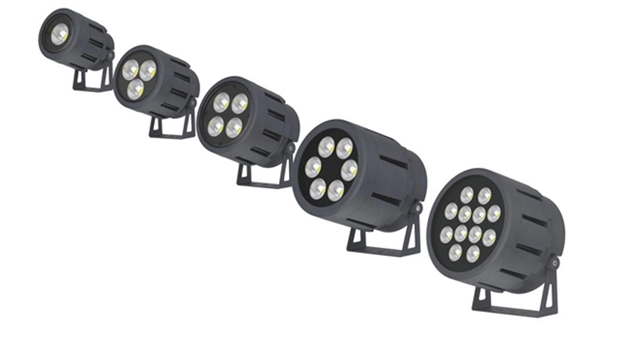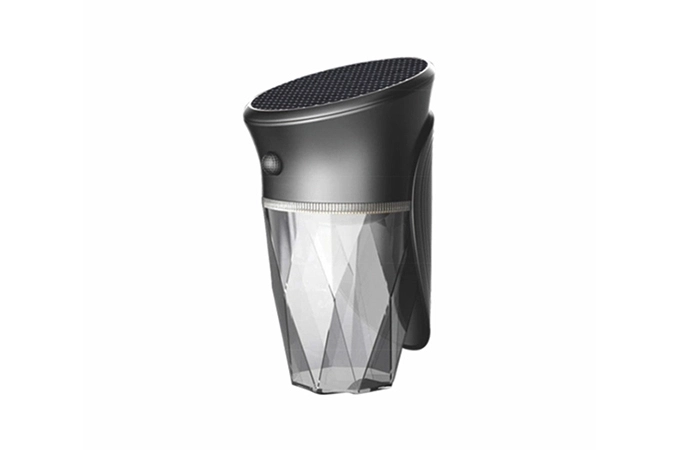English
When it comes to outdoor lighting, two of the most common—and often confused—types are spotlights and floodlights. Each serves a unique purpose and offers different lighting characteristics, which makes choosing the right one crucial for enhancing visibility, safety, and aesthetics.
A spotlight is a focused beam of light that projects in a narrow cone, typically between 15 to 45 degrees. HYDGET LIGHT's LED landscape spotlights are engineered for precision and intensity, making them perfect for:
Highlighting architectural features or garden sculptures
Illuminating signage or flags
Creating dramatic light contrasts in landscaping
Because of their focused beam, spotlights are best for targeted illumination where you want to draw attention to a specific area.
A floodlight, on the other hand, casts a wider beam, typically over 60 degrees, sometimes even up to 120 degrees or more. HYDGET LIGHT's LED floodlights are designed to illuminate larger outdoor areas, including:
Driveways and parking lots
Yards and sports courts
Building facades and security zones
Floodlights provide broad, even coverage and are ideal for situations where safety, visibility, and wide-area lighting are priorities.
| Feature | Spotlight | Floodlight |
| Beam Angle | Narrow (15°–45°) – Concentrated light beam that travels farther | Wide (45°–120°+) – Disperses light across a broad area |
| Light Spread | Focused – Produces a tight, intense cone of light with minimal spill | Diffused – Offers even, widespread illumination to minimize shadows |
| Lumen Range | 100–3,000 lumens – Sufficient for focal lighting | 700–20,000+ lumens – Covers large areas with high brightness |
| Focus | Targeted and intense – Draws attention to specific elements | Broad and ambient – Enhances visibility across entire zones |
| Best For | Accent lighting, object highlighting, visual emphasis | General area lighting, security lighting, large coverage needs |
| Design Impact | Creates dramatic shadows and focal points for landscape aesthetics | Ensures uniform light for functionality and safety |
| Energy Use | Lower power draw for small-scale usage; optimized via smart control (product-dependent) | Higher power output, but energy-efficient due to LED and solar technologies |
| Use Case | Gardens, signage, columns, trees, architectural features | Driveways, building exteriors, parking lots, playgrounds, public areas |
| Common Locations | Entryways, sculptures, patios, feature walls | Garages, yards, sports courts, commercial perimeters |
| Installation Areas | Residential gardens, facade uplighting, commercial signage | Warehouses, security zones, construction sites, wide outdoor areas |

Choosing the right light depends on your goals. Here's how each type shines:
Accent Lighting: Highlight garden sculptures, artwork, or architectural details.
Pathway Lighting: Focus light on walkways for safety and aesthetics.
Off-Roading: Narrow beams project light over long distances, ideal for vehicles.
Residential Use: Perfect for task lighting, like over a kitchen island or outdoor seating area.
Installation Tips:
Upward Projection: Aim from low angles upward (e.g., to light up a tree canopy) to create depth and dimension.
Anti-Glare Adjustments: Add glare shields or adjust angles to prevent the beam from shining directly into eyes.
Security Lighting: Broad coverage deters intruders and enhances visibility.
Landscape Lighting: Illuminates entire yards, building facades, or signage.
Commercial Spaces: Lights up parking lots, sports fields, or public parks.
Outdoor Events: Ensures even illumination for gatherings or activities.
Installation Tips:
High Mounting: Place on eaves or tall poles to expand the light coverage radius.
Warm Light Preference: Opt for a 2700K–3000K color temperature to avoid the harshness of cool white light and maintain a cozy garden atmosphere.
Common Mistakes to Avoid
Overusing Floodlights: Excessively bright, large-scale lighting can flatten your yard's visual depth—making it feel more like a parking lot than a landscape.
Incorrect Spotlight Angles: Direct horizontal beams onto plants or walls can cause harsh shadows—side or backlighting is often more flattering.
Ignoring Color Temperature: Cool white light (5000K+) can make spaces feel sterile. Warm white light (~3000K) is better suited for relaxing, cozy environments.
Both spotlights and floodlights benefit from LED technology, which offers:
Lower Energy Use: LEDs consume fewer watts per lumen compared to halogen or incandescent bulbs.
Longevity: LED lights last longer, reducing replacement costs.
Smart Features: Many HYDGET LIGHT products include sensors that adjust brightness based on ambient light, saving energy and enhancing convenience.
For eco-conscious users, our solar-powered options, like Solar Flood Lights, provide sustainable solutions without compromising performance.
To select between spotlights and floodlights, consider:
Purpose: Highlight a specific feature? Choose spotlights. Need broad coverage? Opt for floodlights.
Installation Location: Higher placements benefit from spotlights' focused beams, while lower areas suit floodlights' wide spread.
Energy Goals: Both are energy-efficient with LEDs, but ensure the lumen output and beam angle match your space's needs.
At HYDGET LIGHT, we specialize in LED outdoor lighting solutions designed to thrive in all weather conditions. Our products combine energy efficiency, smart sensor technology, and modern design. Our product range includes:
Outdoor Wall Lights and Solar Wall Lights for stylish illumination.
LED Flood Lights and Solar Flood Lights for broad coverage.
LED Bollard Lights and Inground Lights for pathways and landscapes.
Outdoor Spotlights for accentuating specific features.
Our lights are crafted with weather-resistant materials and feature smart sensor technology, ensuring reliability and energy savings. Whether for gardens, driveways, or commercial spaces, HYDGET LIGHT has the perfect solution.
The main difference lies in the beam angle and coverage area:
Spotlights emit a narrow, focused beam (typically 15°–45°) and are ideal for highlighting specific objects like trees, statues, or building features.
Floodlights produce a wide beam (typically 60°–120° or more) and are used to illuminate broad spaces, such as parking lots, driveways, or outdoor sports courts.
In essence, spotlights are for precision, while floodlights are for coverage.
Yes. Floodlights are specifically designed for large-area lighting. Their wide beam spread allows them to cast uniform light across expansive outdoor areas. HYDGET LIGHT’s LED floodlights are equipped with high-lumen outputs and optional motion sensors, making them perfect for:
Outdoor security lighting
Large residential yards
Commercial and industrial premises
Construction zones and loading docks
For even more versatility, our solar floodlights offer powerful lighting without the need for grid electricity.
Beam angle directly influences how light is distributed:
A narrow beam angle (15°–45°) delivers concentrated, high-intensity light, which travels farther but covers less area—ideal for focal point lighting (e.g., a flagpole or art piece).
A wide beam angle (60°–120°) spreads light across a much larger surface area—ideal for general lighting (e.g., a garden or patio).
Pro tip: If you're trying to light a tall tree, a narrow beam spotlight works best. For an entire patio or yard, choose a wide-angle floodlight for even distribution.
Both spotlight and floodlight models from HYDGET LIGHT are designed with energy-efficient LED technology, but usage scenarios can impact overall efficiency:
Spotlights are often used in shorter durations and focused areas, leading to lower overall energy consumption, especially when equipped with motion sensors or timers.
Floodlights, while sometimes higher in wattage due to larger coverage, compensate with high-lumen-per-watt ratios, meaning more brightness per unit of energy.
For example:
A 30W HYDGET LED spotlight may produce 3,000 lumens focused on a statue.
A 50W HYDGET LED floodlight might emit 6,000 lumens across an entire yard, both highly efficient depending on the application.
Additionally, HYDGET LIGHT's solar-powered models further enhance energy efficiency by eliminating electricity costs while offering eco-friendly performance.
Understanding the distinction between spotlights and floodlights is essential for crafting the ideal lighting layout. With HYDGET LIGHT, you gain access to premium, customizable lighting options that elevate functionality and beauty. Browse our full product catalog today to find your perfect fit.
Shine brighter, smarter, and safer—with HYDGET LIGHT.

